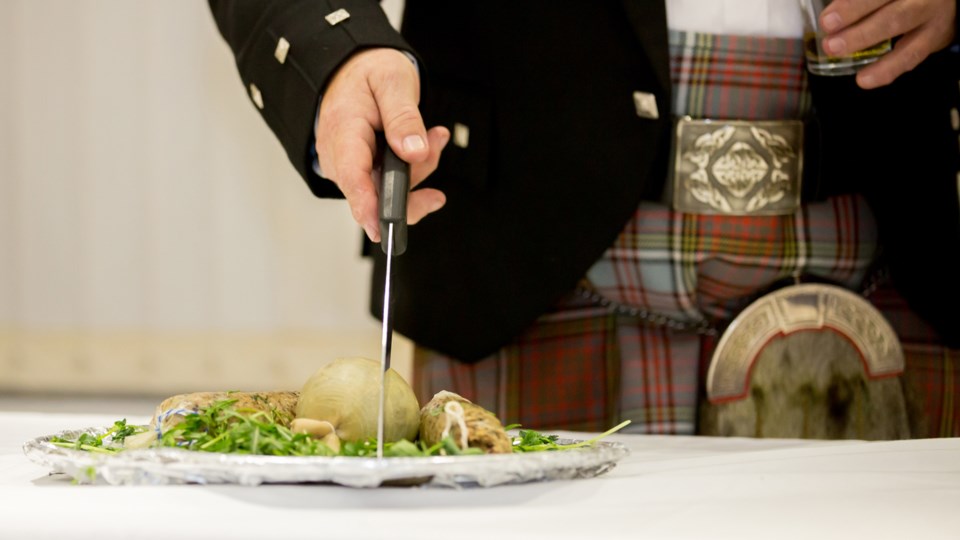As you follow the stories that fill out the history of a community you will frequently notice that ethnic or national groups play an important role.
From the very early days of New Westminster, the Caledonian and St. Andrew’s Societies celebrated their Scottish roots with dinners, dances, concerts and the like, with an enthusiastic focus on St. Andrew’s Day in November and the Scottish poet Robbie Burns on the anniversary of his birth in January. A number of years ago, we were able to assist in the placing of two archival items in the Scottish studies collection at Simon Fraser University as they were excellent reminders of the Scots activities in British Columbia.
The items are two programs for special events. One was a “bill of fare” for a Caledonian and St. Andrew’s dinner held at the Colonial Hotel in New Westminster in November of 1886. The other was a menu card for a Burns anniversary banquet held in Ashcroft in January of 1900. Both are interesting and filled with great information.
For the New Westminster Festival of St Andrew, those gathered together enjoyed a wonderful array of Scottish food on the menu. Along with a variety of courses including soup, fish, meats, poultry, vegetables, pastries, desserts, nuts and fruits, there were, of course, oat cakes, cheeses and haggis.
In Ashcroft, the menu was similar but the upcountry group must have had someone with a leaning towards Scottish wording as a number of words and phrases managed to creep into the lists. We find words such as “chappit tatties,” “het raists,” “bubbly jock,” and “usquebaugh.”
For the haggis, there were words written by Burns: “Fair, fa your honest, sonsie face, Great Chieftain o’ the puddin race.” Some of you reading this will likely know that the “usquebaugh” in the list meant water of life or scotch whisky.
Another interesting feature of the New Westminster dinner was that a significant portion of the evening was taken up with the making of toasts in recognition of a long list of themes. Included were, of course, the queen, the royal family, and the vice-regal representatives in Canada and B.C. And there were many others, examples of which are toasts to: the armed forces, the professions, industries, the press, the governments, and to the “fair daughters of British Columbia.”
There were also a few toasts that had a more personal meaning for the people in a new land: “The land we left and the land we live in” (“Always to be remembered – Ever to be Defended”), “Our Sister Societies and Guests,” (“Will ye no come back again?”), “Our absent friends” (“Though absent not forgotten”), and “Guid Nicht an’ joy be wi’ ye a’ “ (“Auld Lang Syne”).
And so we have a couple of examples of Scots gathered to honour their homeland and that homeland’s poet here in New Westminster and in the B.C. interior at Ashcroft.



